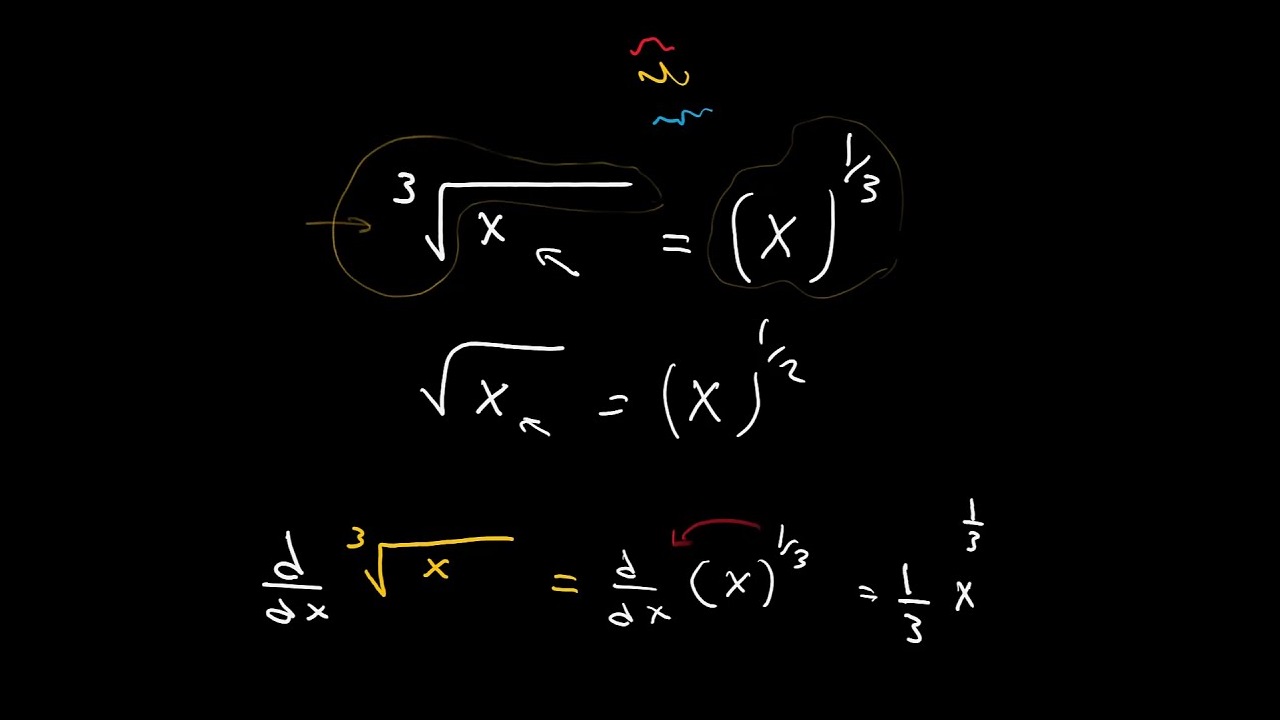
Introduction:
Derivation is considered one of the most important concepts and mathematical laws that are not only studied in mathematics, but also have great importance in various scientific and practical fields, such as physics, chemistry and engineering branches, and in order for us to understand the derivation of the radical function, we must get to know the concept of derivation. In this article, the concept of derivation of the radical function will be addressed, and then examples will be presented to clarify the rule.
Derivation:
Derivation or differentiation is a way to find the derivative of a function at a specific point, and what is meant by the derivative here is the instantaneous rate of change in the function (Instantaneous Rate) with respect to one of the variables.
We have a mathematical equation with two variables: X and Y. The derivation, in this case, expresses how fast y changes with respect to x at any given value of x. The formula that expresses the rate of change of y with respect to x is: dy/dx
Root derivation base:
The radical function is a function that contains variables, and as we mentioned, the derivation of the radical function means finding the rate of change of the function with respect to the variable. Root derivation base As follows:
It can be expressed in the following mathematical formula:
Finding the root derivation rule:
The basis of the formula for the root derivative can be found using the following methods:
- The first principle of derivatives.
- Differentiation power base.
First / the first principle of derivatives:
Now that we know that the derivative of the root function is: ، We will prove this by defining the derivative or the initial principles of the derivative, and in general the derivative can be defined in the following form:
f'(x) = lim h→0 [f (x + h) – f(x)] / h
This can be simplified by the following:
d(√x)/dx = lim h→0 [√ (x + h) – √x] / h
To simplify this mathematical expression, we multiply both the numerator and the denominator by: √(x + h) + √x
So the equation is as follows:
lim h→0 [√ (x + h) – √x] / h = lim h→0 {[√ (x + h) – √x] × [√ (x + h) + √x]} / {h × [√ (x + h) + √x]}
And using the formula: (a+b) (a-b) = a2 – b2
= lim h→0 [(x + h) – x] / {h × [√ (x + h) + √x]}
= lim h→0 [x + h – x] / {h × [√ (x + h) + √x]}
= lim h→0 h / {h × [√ (x + h) + √x]}
= lim h→0 1 / [√ (x + h) + √x]
= 1/ (√x + √x)
= 1/(2√x)
Second: the power of differentiation rule:
The derivative of a root can also be found using the power rule, which states:
d(xn)/dx = nxn-1
So that n ≠ -1
As follows:
The root of the variable x is x to the power, and if we adopt the formula: d(xn)/dx = nxn-1, n ≠ -1:
d(x1/2)/dx = (1/2) x (1/2) – 1
= (1/2) x-1/2
= 1/(2√x)
—————————————————————————————————-
illustrative example 1:
Find the derivative of the root:
the solution:
d (√ (2x + 5))/dx = d (√ (2x + 5))/d (2x + 5) × d (2x + 5)/dx
= 1/ (2√ (2x + 5)) x 2
= 2/ (2√ (2x + 5))
= 1/√ (2x + 5)
illustrative example 2:
Find the derivative of the root:
the solution:
d (√ (x – 3))/dx = d (√ (x – 3))/d (x – 3) × d (x – 3)/dx
= 1/ (2 )







